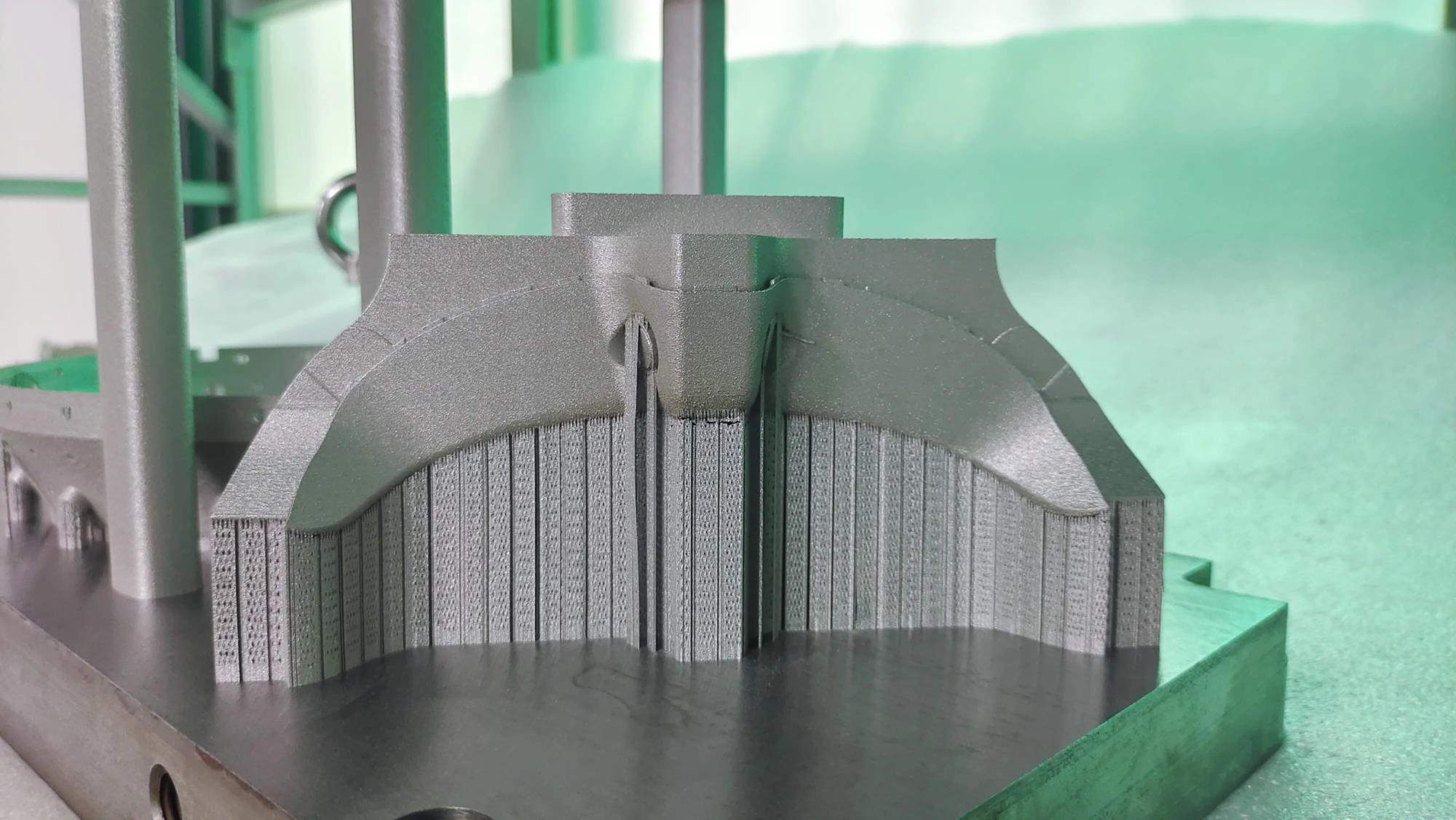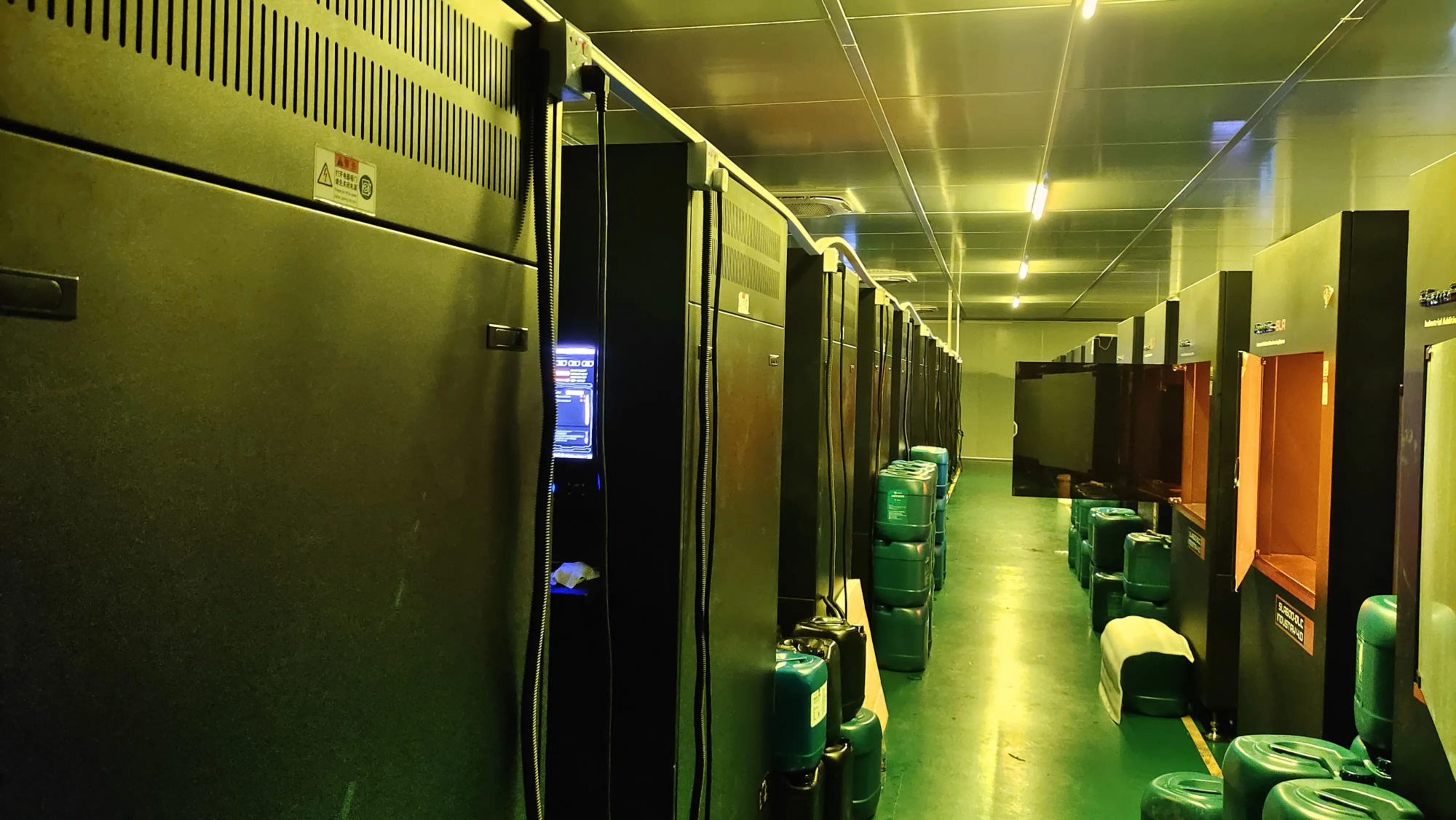Utilization efficiency and precision: The final guide to 3D pallet printing for industrial applications
Speed, accuracy and adaptability are crucial in the competitive environment of modern manufacturing. One of the key innovations in driving rapid prototyping and production forward is 3D tray printinga specialized method that utilizes selective laser melting (SLM) technology. This technology, especially skilled metal components, revolutionizes how to develop and manufacture complex, highly resistant parts. It’s not just about building an object; it’s about maximizing machine utilization and batch efficiency by strategically scheduling multiple parts in a single build volume. For industries that require strict quality and accelerated timetables, mastering 3D pallet printing is a decisive advantage.
Unrivaled accuracy of SLM in tray printing
From its core, 3D tray printing using SLM involves powerful lasers selectively fusing ultrafine metal powder into complex, completely dense parts. Unlike general purpose 3D printing, this approach performs well in creating powerful industrial components that can withstand extreme environments. The real power lies in optimizing the build tray – using available XY printing areas and Z-axis heights are effective. Engineers strategically arrange prototype or end-use parts in pallets, taking into account the following factors:
- Nesting efficiency: Minimize wasted space to maximize the number of parts per build. Advanced software helps strategically package parts and even nest smaller components within a larger range of 3D boundaries.
- Thermal consistency: Ensure the position of the parts to ensure even distribution and cooling during the melt process. This prevents distortion and stress distortion and is critical for dimensional accuracy and mechanical integrity.
- Support structure optimization: Design minimal effective support structures that secure parts to the build board without excessive material consumption or complicated post-processing. Placement has a great impact on support requirements.
- Direction of attributes: Align critical surfaces and features to optimize their grain structure for strength, fatigue resistance or surface finishing through a layer-by-layer construction process.
Why 3D tray printing improves rapid prototypes
The implementation of pallet printing strategy changes the rapid prototype workflow:
- Significantly reduce delivery time: Making multiple design iterations or sets of components in a single printing cycle eliminates the need for sequential printing. Functional testing insights were days or weeks ago, accelerating design verification and improvement.
- A large amount of cost efficiency: Combining parts reduces overhead costs associated with machine operation (power, gas, maintenance per set of builds) and operator time. Material consumption of the support can also be optimized throughout the pallet layout.
- Enhanced process stability and quality: Known buildings "family" Parts in the respective heat wall segments on the pallets together enhance repeatability and quality consistency throughout the batch.
- Simplified small volume production: For bridge manufacturing or final production of small batches, pallet printing allows efficient manufacturing without investment in traditional tools.
Material versatility and customization: Beyond the ordinary
SLM tray printing is not subject to material constraints. Senior Manufacturers offer a wide portfolio, including but not limited to:
- Aerospace and Defense: Titanium alloy (TI6AL4V, TI64ELI), aluminum alloy (ALSI10MG, ALSI7MG), Inconel (718, 625), Cobalt Chrome, Maraging Steel.
- Medical Implants and Tools: Biocompatible titanium alloy, cobalt chromium, stainless steel (316L).
- Automotive and Industry: Tool steel (H13, Maraging), copper alloy, stainless steel (17-4PH, 316L), nickel alloy.
- High-performance applications: Tungsten, a refractory metal.
Custom alloy formulations or material handling parameters can often be developed to meet specific application requirements for strength, thermal stability, corrosion resistance or biocompatibility.
The key role of post-processing – completing the journey
SLM pallets produce excellent near mesh parts, but post-processing translates them into finished components ready for deployment. A truly comprehensive service provider offers integrated one-stop solution:
- Support removal: Use precise techniques to carefully remove the support structure.
- Pressure relief heat treatment: It is crucial to alleviate internal stresses caused during the construction process.
- Hot isostatic pressure (hook): Increase density and eliminate microscopic voids in critical applications requiring ultimate fatigue performance.
- Precision machining: Achieve tolerances beyond AM functions (turning, milling, drilling, grinding).
- Surface finish: Grind, polish, tumbling, grinding or specialized electrochemical treatment (e.g., Electronicopolish®) to improve aesthetics, reduce roughness, enhance corrosion resistance or prepare coatings.
- Metal plating and coating: Used for professional applications, nickel plates, powder coatings, anodized, PVD/CVD coatings.
Why Greatlime for your 3D tray printing needs?
The complexity and high risk nature of industrial metal 3D printing requires unparalleled expertise and infrastructure. Great As the main rapid prototyping and manufacturing partner, separate:
- Cutting-edge SLM technology: Our facilities feature state-of-the-art SLM machines equipped with multi-laser capabilities, ensuring faster build speeds, larger build volumes, and superior resolution for complex functions.
- In-depth process mastery: Our engineers have extensive experience in optimizing pallet layouts, material parameters, support strategies and thermal management to maximize yield, quality and cost-effectiveness for your specific builds.
- Unrivaled Materials Expertise: We go beyond standard products to handle a large number of demanding metals and collaborate on customized material solutions.
- Full spectrum post-processing: From basic support removal to precise CNC machining and high-end surface treatments such as hip and electropolishing, we handle every step of the interior under strict quality control, ensuring traceability and consistency.
- Quick turnaround: Our core commitment is "Rapid prototyping." We use technical advantages and workflow efficiency to deliver sophisticated precision metal parts faster than our competitors.
- Reliability and trust: As a leading rapid prototyping service provider from China and global customers, we prioritize long-term partnerships based on transparency, quality, on-time delivery and responsive technical support.
Conclusion: Unlock new manufacturing efficiency
3D trays printed with SLM technology are no longer an experimental niche; it is a refined, scalable manufacturing strategy. By intelligently leveraging complete build volumes to consolidate parts, manufacturers achieve unprecedented efficiency, cost and speed savings without compromising the excellent material properties and geometric freedom of metal additive manufacturing. Success depends on partners that combine technical strength with deep engineering acumen and comprehensive post-processing capabilities.
Partner with Greatlight – Advanced SLM systems, professional pallet printing expertise, meticulous post-processing and a commitment to fast, precise results. Improve your prototype and production. Customize your precision speed prototype parts now! Contact our tech team today to discuss your project and experience Gremphern Advantage: unrivalled speed, quality and value.
FAQ: Understand 3D tray printing
Q: Is 3D tray printing only suitable for small parts?
A: Absolutely not. Although perfect for batches of small parts, pallet printing performs well when combined any Combinations of parts suitable for machine-building indoors – from dozens of complex components to several large complex items or mixtures of sizes. The key is that experienced engineers build their nests smartly.
Q: Is it less quality to pack more parts on pallets risk?
Answer: Improperly done. Expert process planning ensures that each section receives the necessary thermal management and laser attention. Print parameters and orientations are simultaneously tailored to all components in the tray to ensure uniform and high quality throughout the batch. The challenge lies in optimization all Common factors.
Q: What is the main cost savings for tray printing?
A: Mainly saves machine time from each part (amortization, removal, heating/cooling cycles on many parts), optimized material use (effective support), and labor efficiency. This makes it cost-effective, especially for prototypes and small volume production runs.
Q: How complex are the parts in a single pallet?
A: SLM technology inherently deals with extreme geometric complexity. Pallet printing can control a diverse, highly complex part in a build, as long as the thermodynamics are controlled. Limitations are physical locations in the tray and Total The volume construction rate of the laser.
Q: Does Greatlight help with the design and nesting of tray printing?
Answer: Yes! This is a core expertise. Our engineering team provides a complete design for Additive Manufacturing (DFAM) including analyzing your parts for optimal orientation, supporting structural design, thermal considerations, and maximizing pallet density while ensuring quality and manufacturing.
Q: What file format is needed and how to prepare multiple parts for tray printing?
A: We usually require a single part as a separate step or STL file. Our team handles the complex tasks of assembly, orientation, support generation and nesting of pallet builds. Detailed labeling of key functions is always beneficial.
Q: Which industries benefit the most from SLM pallet printing?
A: Aerospace (lightweight turbine parts, pipes), medical (custom implants, surgical tools), automotive (high performance prototypes, hydraulics), industrial (complex heat exchangers, fixtures/fixes, tool plug-ins), energy (turbo blades, fuel system parts).
- Q: Greatlight can usually convey the speed of parts printed on the pallet?
A: Ours "Rapidly" In rapid prototypes, it is central. Although depending on complexity, material and pallet density, we usually pass the first particle SLM metal parts (including post-treatment) in a few days, much faster than traditional manufacturers or optimized additive providers. Contact us for your specific project schedule.





